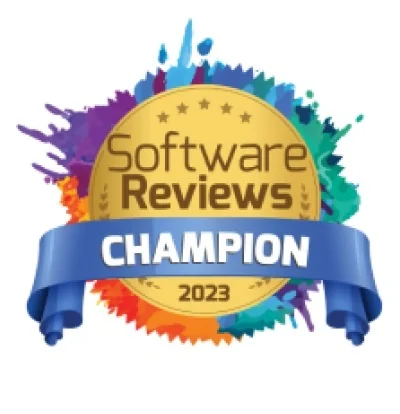Do you ever feel like taking risks?

As an individual, being a daredevil might leave you with a few broken bones.
If you’re a bank, however, taking risks doesn’t just have implications for you, but for all your customers and (if you’re big enough) for the economy as a whole.
The excessive financial risk-taking engaged in by banks on the eve of the 2007-2009 financial recession prompted new regulations to strengthen the supervision, regulation and risk management of banks.
Basel III was drafted in 2010, with finalization and implementation set to take place over the next several years. Basel IV (currently slated to go into effect in January 2023) is arguably just a finalization of the Basel III capital requirements standards, although the projected financial impact makes it seem worthy of its own Roman numeral.
The Basel III framework, as well as Basel IV, call for regulation changes in multiple areas, including:
- Credit risk
- Market risk
- Operational risk
Up-to-date data management makes meeting the credit risk and market risk standards much more feasible, and is absolutely necessary for operational risk. Let’s take a look at how and why.
Credit Risk Management and Basel III
If you lend your favorite nephew $50, and he doesn’t pay you back by the time you agreed, chances are your relationship might suffer, but your finances will probably be okay.
If you lend your favorite nephew $50,000, and he doesn’t pay you back when he said he would, you better have a lot of cash in reserve. If not, you may end up dining on tea and toast for the foreseeable future.

In which situation are you more likely to end up short those 50 grand: if you made the decision based on your financial consultant’s go-ahead? Or if you looked at the numbers yourself (with a glance or two at the photo of your nephew you keep on your desk) and made your own judgment call?
Objective, external, and standardized analyses are the best strategies to keep us out of hot water.
Basel III requirements and Basel III implementation aim to shift the standard by which banks decide how much capital they need in reserve for the amount of credit they extend.
IRB (internal-ratings based) models were absolutely fine under Basel II. That left plenty of room open for banks to choose the internal models that proved that they didn’t need all that much capital. The Basel III framework wanted to do away entirely with IRB models, and have all decisions made based on SA (standardized approach) models. They partially got their wish.
Under Basel III and IV, some asset classes are restricted in the types of IRB models they can use, or they are prevented from using IRB at all. Output floor stipulations ensure that even where IRB models are used, the result can be no lower than 72.5% of the SA result.
Even if you are using an objective, standardized analysis, you still need to be analyzing the right numbers. If you put the wrong numbers in, you get the wrong numbers out. Garbage in, garbage out, ya know?
And compliance auditors really don’t like finding garbage.

Automated data lineage keeps your data clean and clear, and allows you to visually trace the entire path of any data point from origin to destination. With this visualization, you can understand every transformation that happened to it along the way, which enables problematic leaps to stand out like a sore thumb. Automated data lineage promotes confidence in your numbers, confidence in your conclusions regarding Basel III capital requirements, and confidence in your risk management.
When an auditor asks “How did you get that number?”, all you need to do is point to the right spot on the data flow visualization.
Need a Refresher on Data Lineage and Its Use Cases?
Check out our eBook, "The Essential Guide to Data Lineage in 2021"
Download the eBook
Operational risk management
If you keep your wallet on your dining room table, don’t be surprised if you have less money at the end of the month than someone who keeps it hidden behind the towels on the top shelf of the closet.
That is what’s known in the financial community as “higher operational risk.”

Operational risk (i.e. the risk of a change in value caused by the fact that actual losses, incurred for inadequate or failed internal processes, people and systems, or from external events, differ from the expected losses) is another class of risk more heavily regulated by Basel III and IV.
As part of their withdrawing internal-model based standards and mandating a Single Standardized Measurement Approach for operational risk, Basel III implementation requires that banks capture 10 years of loss data.
Easier said than done.
The process of collecting and analyzing internal loss data, as expressed by international Netherlands-based bank ABN AMRO, resembled “wandering the data desert in search of a structure.”
The bank had defined about 30 fields and planned to build an intranet-based tool and roll it out worldwide.
Well, the “easy” plan stalled when their 30 fields were only partially recognized. And it got even more stuck when they realized that they had a whole list of unanswered mission-critical questions, like: “Who is the owner of the data?”, “How do we prevent double entries?”, and “What is a loss” anyway?”.
This is where data lineage management becomes an integral part of Basel III compliance. Automated metadata management enables data consistency and data flow transparency across the entire data landscape. ABN AMRO’s 30 fields would have been immediately recognizable and traceable. There would be no confusion as to who owns what data. One source of truth prevents redundancy and/or conflicts between siloed data sets.
Ready or not, here Basel comes!
The Basel III and Basel IV implementation requirements have been finalized. The clock is ticking. It’s time for banks to address any shortcomings in their data management and risk management.
Then you can sit back and relax… or go skydiving.








